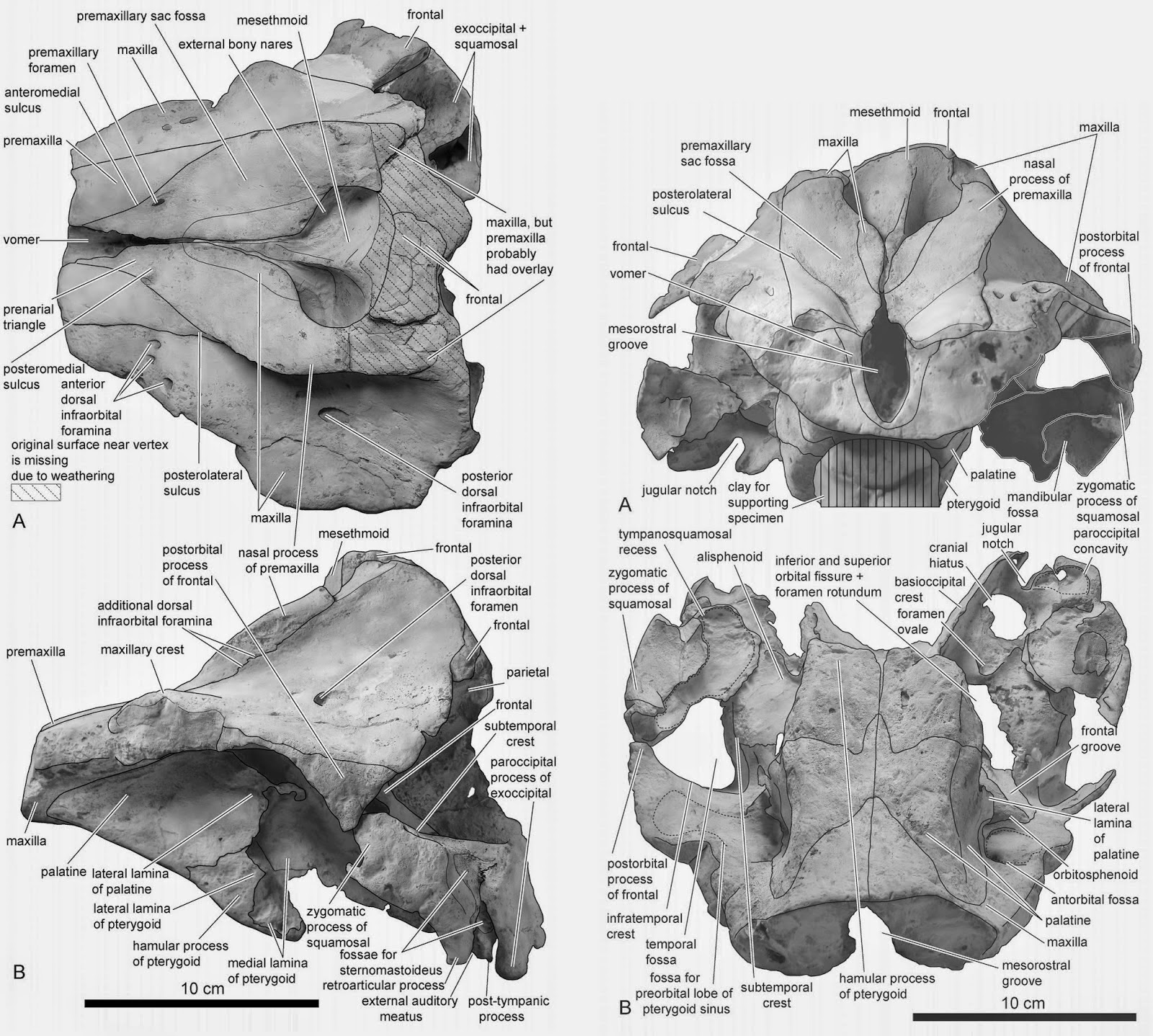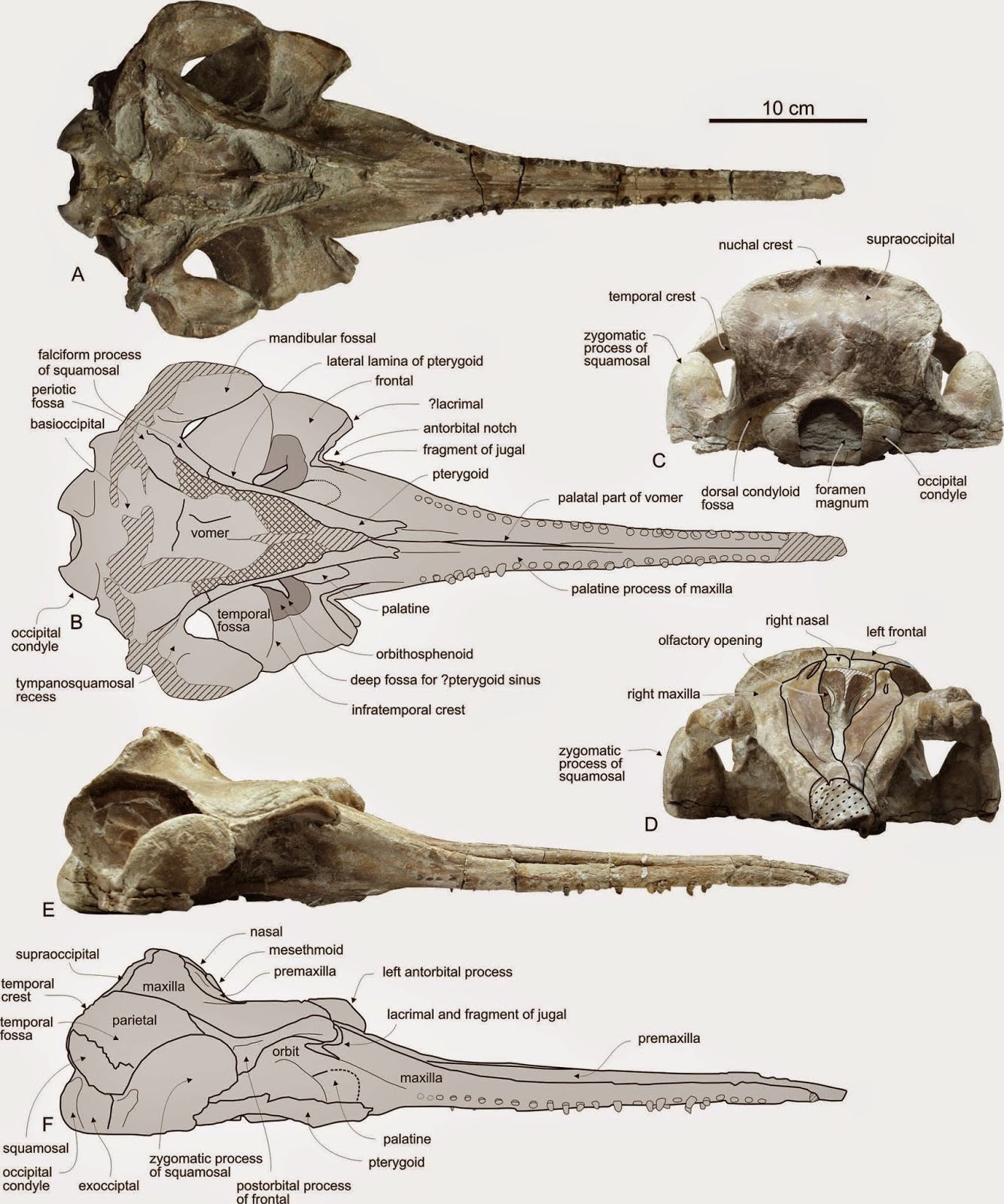The Earliest Whales appeared in what is now Pakistan and India at
the eastern margin of the Tethys Sea then spreading along the southern margin
of the Tethys (North Africa) and eventually reaching the Atlantic, then along
the west coast of Africa, with specimens known from the later Eocene of
Morocco, Senegal and Nigeria.
In a paper published in the Journal of Paleontology in January 2014,
Philip Gingerich of the Department of Earth and Environmental Sciences and
Museum of Paleontology at the University of Michigan and Henri
Cappetta of the Institut des Sciences de l’Evolution at the Université de Montpellier II, describe a new species of Protocetid (the earliest group of
Whales known from outside Pakistan and India) from the early Middle Eocene Kpogamé-Hahotoé
Phosphate Beds to the northeast of Lomé.
The new species is named Togocetus traversei,
where ‘Togocetus’ means ‘Togo-Whale’
and ‘traversei’ the late Michel
Traverse of Bourg de Lignerolles in France, who was an operations manager at
the Kpogamé-Hahotoé Phosphate Works and collected many vertebrate specimens.
Togocetustraversei is described from a partial left dentary (jawbone), a series of
teeth, a series of vertebrae and a number of fragmentary limb bones and ribs.
It is thought that most of these bones come from a single specimen, however
they were disarticulated and scattered, probably due to predation or scavenging
shortly after death, and many bones were also broken by the actions of heavy
machinery at the site.
Dentary remains of middle Lutetian Togocetus traversei, from Kpogamé-Hahotoé. (1, 2) Partial left dentary
with roots oralveoli for a single-rooted P1 and double-rooted P2–4, in occlusal
and left lateral view; (3) partial right dentary with roots for M2–3; (4, 5)
partial left dentary with M3; (6), right dentary with the alveolus for C1; and
partial crowns of P1–M2. Note the narrow, deep dentaries; endof the
mandibularsymphysis near the anterior root of P3; diastemata separating C1, P1,
P2, P3 and P4; and unusually small mandibular canal for a protocetid.
Abbreviation: mc = mandibular canal. Gingerich & Cappetta (2014).
Gingerich and Cappetta also report the remains of two other
Protocetids from the site, as well as a Protosirenid (early Sirenian) a Dugong
and some unidentified Mammal bones.
See also…
Dolphins, Delphinidae, are the most diverse group of Whales (or
indeed any form of Marine Mammals) alive today, with 36 described species
including charismatic animals such as Bottlenose Dolphins and Killer Whales.
Historically a large number of fossils have also been...
The Squalodelphinidae are a small group of small to medium-sized
Toothed Whales known from the Miocene of Europe and North and South
America. They are thought to be related to the modern Asian River
Dolphin, Platanista gangetica, which
lacks any close living relatives. The group is not well understood, with most
described specimens being fragmentary in nature.
Follow Sciency Thoughts on Facebook.




